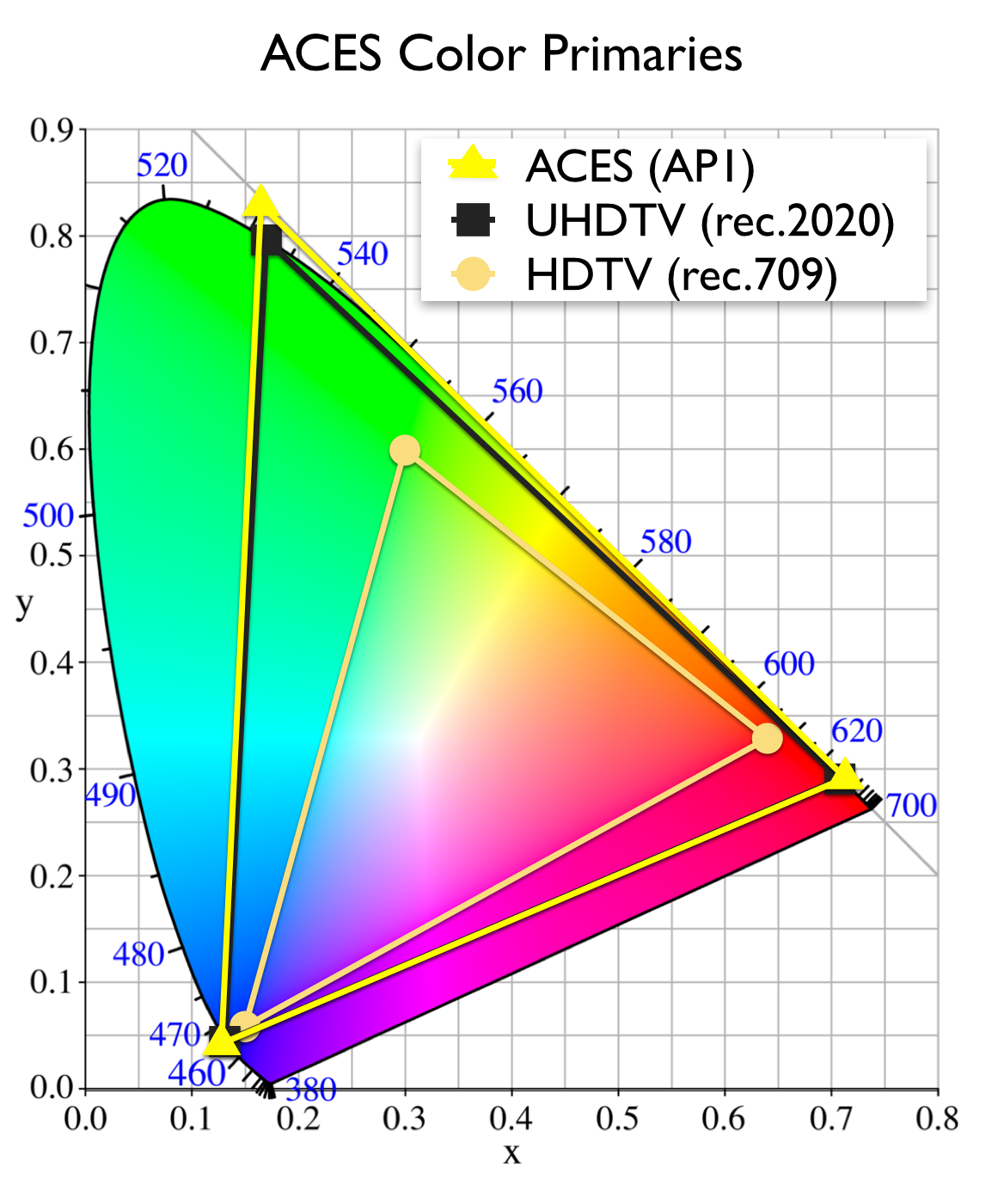Hollywood backs better pixels with new color standard
Jan 30, 2015
Author: Jeff Yurek
UPDATE: The chart in the original post was incorrectly labelled as the ACES "AP1" color gamut but the gamut pictured was actually the much larger "AP0" color gamut. The AP1 primaries are designed as a color correction and computer graphics working space while the AP0 primaries are the connection space of ACES, and how all files will actually be encoded. I've corrected the label and added a chart that shows the AP1 color gamut at the end along with the primaries for both.
At CES this year the key message from nearly all the top TV brands was that better pixels– with richer colors, brighter brights and deeper blacks– are about to take the UHD TV viewing experience to new heights. TV makers talked up new technologies like Quantum Dots and even began to talk seriously about finding new ways to get content that’s optimized for all these new features into consumers hands so they can experience all the benefits.
Chief among these initiatives is a new organization that display makers are calling the UHD Alliance. The idea behind the alliance is to bring together a bunch of influential companies from throughout the content ecosystem to begin to standardize the capture, delivery and display of the content that will really make your new UHD TV sing. So far, all we know is that companies like Dolby, Warner Brothers, Netflix and Samsung have joined up. They say we’ll start seeing the results of the collaboration sometime in 2015.
All of this is really exciting stuff if, like me, you’ve been following the push to bring not just more but better pixels into our living rooms for the past several years. It also raised a number of questions about what exactly we’d really see from this group in 2015.
But, it turns out we didn’t need to wait long to see the first signs of the form these kinds of industry collaborations might take. Just days after CES another important group in Hollywood, the Academy of Motion Picture Arts and Sciences (you know, the guys who put on the Oscars every year) announced the availability of version 1.0 of it’s Academy Color Encoding Standard (or ACES, pronounced “aces”). Featuring contributions from many of the same partners as the UHD Alliance, the new open standard aims to streamline and future-proof complex color management workflows.
ACES' s "AP0" color gamut contains all of the colors a human eye can detect (represented here by the horseshoe shaped CIE diagram) along with some imaginary colors. AP0 primaries will serve as the connection space for ACES and all files will actually be encoded in this space.
The technical details, available on github, are incredibly mind numbing. That’s actually a good thing because this kind of tedious but concrete standards-building work will ultimately move the industry forward, paving the way for amazing visual experiences in our homes. One of the most interesting nuggets among all of the detailed documentation though, is a new set of color primaries. A seriously huge color gamut, “AP0” will truly future-proof content creation work by capturing every color our eye can see and then some. This means as new technologies emerge and our displays improve from HD color to UHD color and beyond, consumers won’t have to worry about waiting for content again.
ACES describes their AP1 primaries as “rec.2020 plus” and it certainly is that. This more practical color gamut will be used by movie makers for color correction and computer graphics.
Color primaries
The color primaries for both of the above ACES color gamuts in CIE 1931 (xy)
AP0
Red 0.73470 0.26530
Green 0.00000 1.00000
Blue 0.00010 -0.07700
AP1
Red 0.713 0.293
Green 0.165 0.830
Blue 0.128 0.044


